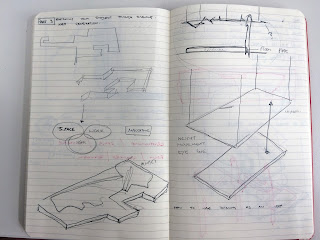After a brief discussion with my personal tutor Pete, I was swiftly directed towards reading "Relational Aesthetics" by
Nicolas Bourriaud. This term had be flagged up alongside "Situational Aesthetics" And it was important for me to understand, comprehend and differentiate the two in order to place where my practice lies. Pete had raised some important questions [although at the time, first thing on a Monday, it did feel like a slight blow to the head]. I have been struggling with a question and sentence that really sums up what my project intentions are and what the project is. I feel I have been forever making work in turn and out of reading and uncovering new information, but that all important why was raised to the surface. Although my practice and project is not a "problem-solution' type project, I do have to consider what I am attempting to question or communicate.

The French curator Nicholas Bourriaud published a book called Relational Aesthetics in 1998 in which he defined the term as:
A set of artistic practices which take as their theoretical and
practical point of departure the whole of human relations and their
social context, rather than an independent and private space
He saw artists as facilitators rather than makers and regarded art as
information exchanged between the artist and the viewers. The artist,
in this sense, gives audiences access to power and the means to change
the world.
The following notes are all from the above source:
Relational aesthetics: Nicolas
Bourriaud
Space enveloping the beholder in
an ambience or constructed environment. Any point in space is both the memory
of time and the reflection of a space. Meaning and sense are the outcome of an
interaction between artist and beholder.
Interlocutors: A person who takes
part in a dialogue. A person who questions/interrogates
Reality is nothing other than the
passing result of what we do together [Marx]
Argument against relational
aesthetics is it is a watered down form of the social critique
The transposition into the
experience of spaces constructed and represented.
Interstice: a small narrow space
or interval between things or parts/series of alternating uniform spaces –
spatial organisation
Relational aesthetics and
constructed situations. situantionists concepts of experimental realities of
everyday settings. Guy Debord.
Deals with forms of human
relation [social relationship between people and go between]
Felix Guattari: Obscure language
/ syntactical clarity blend of English and German words, deceptive shortcuts.
Creating and staging devices of
existence, including working methods. Instead of concrete object. Time is the
material. Aesthetics must become a poetic function that goes hand in hand with
social.
Co-existence criterion: art
producing sociability does the work permit me to enter a dialogue do I exist
and how in the space does it defines.
Relational aesthetics: artworks
on the same basis of inter-human relations they represent and promote relational
art. human relations and social contexts






















































